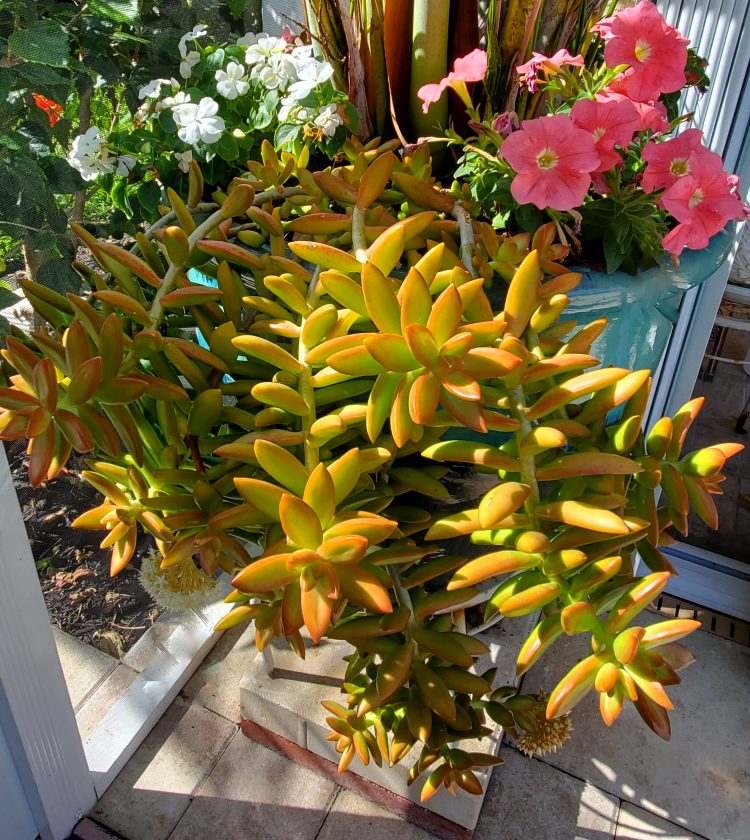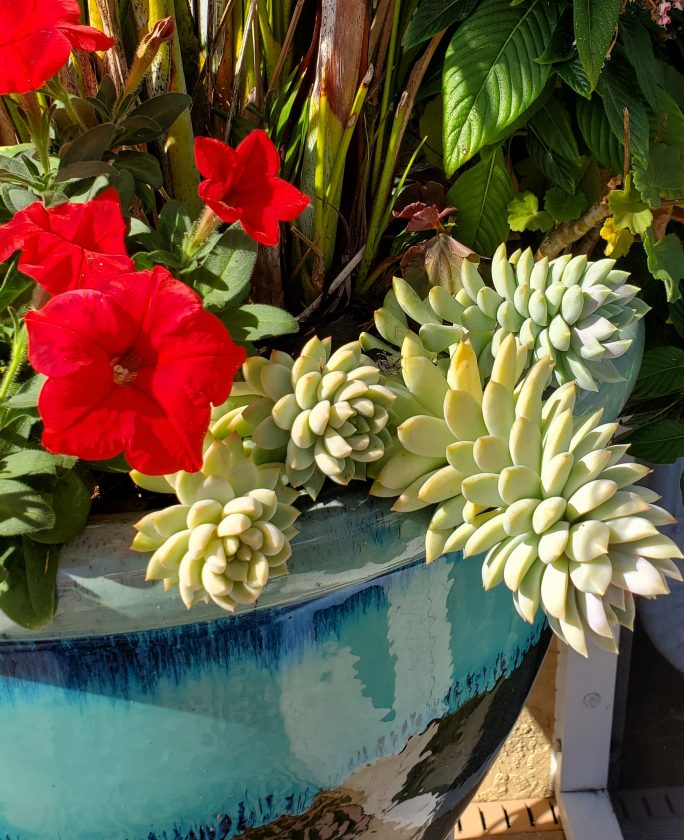Gardening success with succulents
Mar 18, 2021
Succulents are a varied and unique group of low-maintenance plants that are fun and easy to grow in Southwest Florida’s abundant heat and sunshine. With more than 60 plant families containing thousands of hybrid cultivars, succulents offer a wide range of sizes, shapes and colors to add diversity and interest to your gardens.Succulents are characterized by their fleshy stems and leaves that are designed to store water, and are often found in harsh or dry climates. Since our climate is characterized by humidity and a rainy summer season, succulents are ideally suited for containers with a coarse sandy potting medium and controlled irrigation. But you can also locate succulents in well-drained areas of your landscape since they are well-adapted to the harsh conditions associated with brick, concrete and asphalt in urban settings.
Most people think of familiar plants such as sedum or “hen and chicks” when they hear the word succulents, but you might be surprised to discover that there are Florida native succulents such as native yuccas that can be found in coastal dunes or other sandy areas with little available water. In fact, all cacti are succulents, and this includes many of the widely known succulent families such as agave, yucca and aloe. Other succulent families include varieties such as the Desert Rose, Sanseviera (snake plants), Kalanchoes and Euphorbia such as Crown of Thorns and Pencil Plants.
The versatility of the many forms of succulents is matched by the creative ways you can incorporate these plants in your gardens. Container gardens are an extremely popular way to grow and display succulents; you will often see containers already planted with a mixture of various succulents for sale in garden centers. Since succulents require full sun (at least 6 hours of direct sunlight per day), they are well suited for beds near sidewalks, roads and driveways or south-facing walls. Succulents can also be tucked into chicken wire in a frame and used as a wall hanging or inserted among rocks and borders since they need little soil and thrive in sandy conditions.
I enjoy adding succulents to my mixed pots on the lanai since they require little maintenance and don’t shed leaves or flowers that land in the pool; most will develop trailing habits and they add a unique dimension and texture. Most succulents also produce flowers which can be quite unique and colorful.

PHOTO PROVIDED Succulents add interest and texture to mixed pots, and many succulents will even adopt a trailing habit.
Now that you are hopefully interested in adding succulents to your gardening repertoire, what else do you need to know to ensure success? First, you need to use a well-draining potting mix (not potting soil); you can add inorganic materials such as perlite, sand or vermiculite to ensure good drainage. If you use a container, start with a shallow pot with good drainage holes. Once your succulents are planted you only need to water when the soil is almost completely dry. Propagation is simple; leaf succulents such as hens and chicks and aloes self-propagate by producing offshoots or “pups.” Succulents also grow well from cuttings or division of clustering species; cuttings or divisions should be allowed to sit for several days to form a callous on the cut end before planting.
More information on succulent varieties, their maintenance and planting instructions, as well as specific plant lists can be found on the UF/IFAS website:
Once you discover the variety of shapes and colors available in the succulent families, I am sure that you will be inspired to add these beautiful plants to your landscape or as a unique and stylish green accent in your home. You will be rewarded with beautiful and interesting plants that require minimal maintenance – a true gardener’s dream!
Cathy Dunn is a Lee County Master Gardener Volunteer and Garden Club of Cape Coral member.
